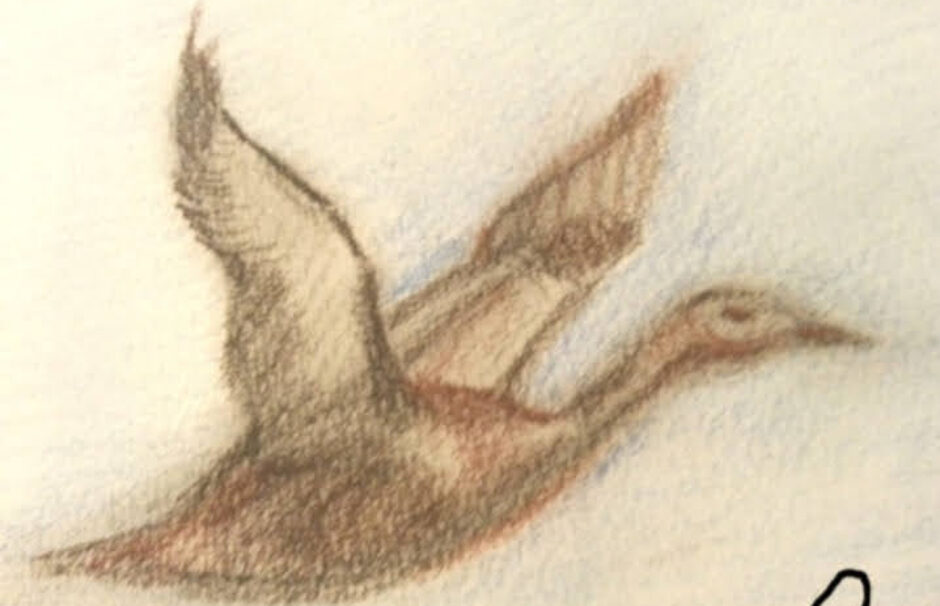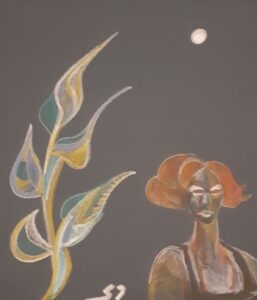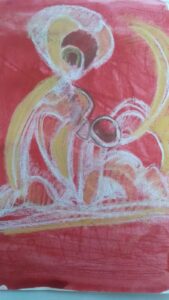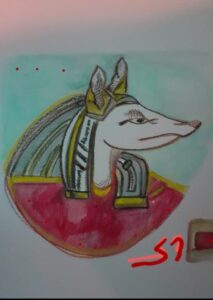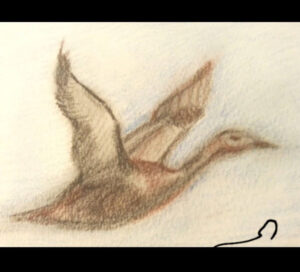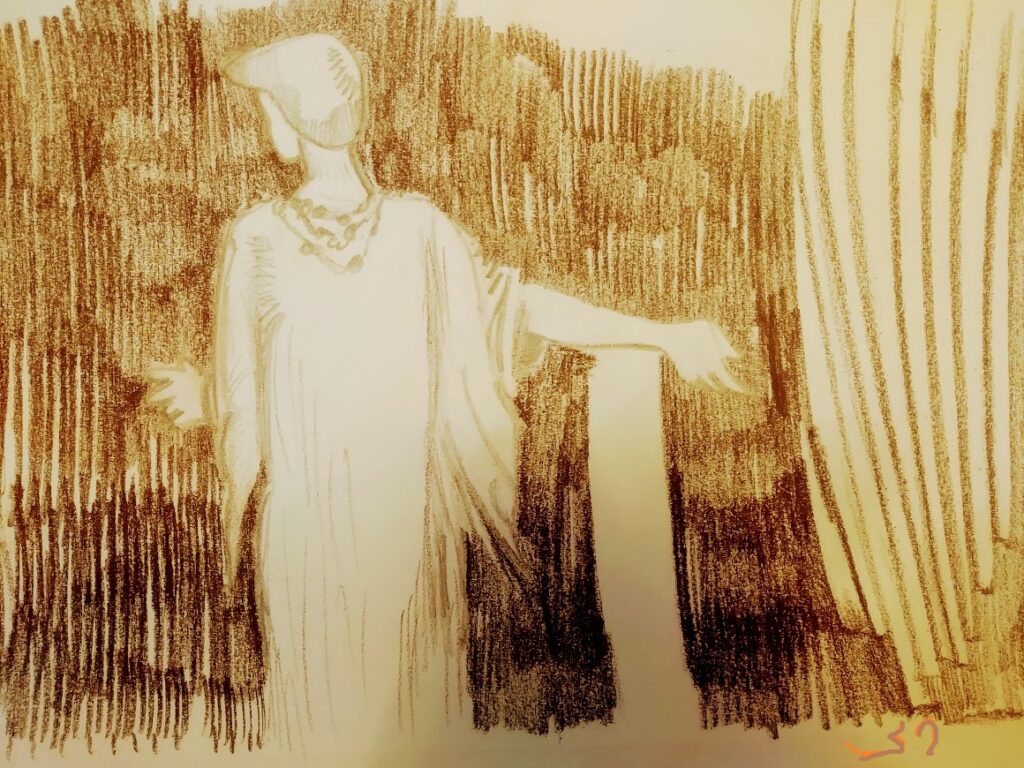חיפוש במאמרים
pages
- “Emotions in Dreams” : A Perspective on the Study Published by Sara Fabjan in the Journal ‘Dreaming’
- Default Mode Network (DMN), mind-wandering, dreaming, and art
- Dr. Raz Even – psychiatrist
- Dreaming and comics art
- dreams in a Patient with Bilateral Lesions of the Amygdala
- dreams intersect with creativity
- exploration of lucid dreaming, virtual reality (VR), and reality checks
- Exploring the Nexus between Dreams and Delirium
- Exploring the Paradox of Sleep Paralysis during Dream States 💎🔮
- links
- LUCID DREAMING and psychoanalytic perspectives
- Lucid dreaming, where individuals are aware they are dreaming – philosophical, historical, and scientific dimensions.
- lucid dreams
- Mark Blechner’s book, “The Dream Frontier,”
- Outline for Lucid Dream Analysis 🔮🕊️
- sleep talking
- surrealism and dreams
- א. תורת החלומות: כתב עת מקוון – א
- א. תורת החלומות: כתב עת מקוון – ב
- אסופת מאמרים על חלומות וחלימה
- האנתרופולוגיה החדשה של החלימה
- המימדים האישיים והחברתיים של החלום / ד”ר גילה עופר
- זמן שינה / דרורית גור-אריה
- חלום בקבוצת פסיכודרמה כקול קבוצתי / ד”ר יהודית ריבקו
- חלום נבואי של הנשיא אברהם לינקולן
- חלומות בגישה יונגיאנית
- חלומות בספרות ובאמנות
- חלומות בעולם העתיק
- חלומות בפסיכואנליזה : ביבליוגרפיה
- חלומות מאמרים מתורגמים
- חלומות מטפלים כפונקציה מקדמת תהליך טיפול / חיה עניס-אברהם
- חלומות צלולים
- לחלום באלכסנדריה / ד”ר רוני אלפנדרי
- מצבי תודעה שמאניים למטרות ריפוי והתפתחות התודעה
- רישום לפורום חלומות
- שיחה על חלימה וחלומות צלולים
- שירים חלומיים / חלי טל שלם
- שיתוק שינה , הלוצינציות וחווית הנוכחות הזרה
-
מאמרים ותקצירים
- Leon Grinberg / “Dreams and Acting Out”
- vivid and lucid dreaming in narcolepsy
- why dreams appear so real and vivid
- Sleep Paralysis and Hypnagogic Hallucinations: Psychological and Neuroscientific Perspectives / Dr Raz Even
- On the animal symbol in dreams / Ruth Netzer
- Sleep paralysis is a phenomenon that manifests at the boundaries of wakefulness and sleep / Dr. Raz Even
- Art Theory: Lucid Dreaming as a Creative Canvas
- LUCID DREAM : WHO DREAMS THE DREAM ?
- Understanding Nightmares: Insights from Science and Psychoanalysis 🔮⚫
- narcolepsy- valuable insights into various states of double consciousness
- Aphasia and dreams
- dreams in a Patient with Bilateral Lesions of the Amygdala
נושאים בחלומות
על חלומות ברשת
Meta
על חלומות ברשת
- facebook חלומות
- הערוץ האקדמי / חלומות וחלומות בהקיץ בטיפול חלק א
- חלום של סיפור
- חלום של סיפור: הרצאת מבוא חלק א חלום של סיפור: הרצאת מבוא חלק א / ודאו מהערוץ האקדמי / ד”ר רוית ראפמן
- חלומות וחלומות בהקיץ בטיפול חלק ב / הערוץ האקדמי חלומות וחלומות בהקיץ בטיפול חלק ב / וידאו מתוך הערוץ האקדמי / פרופ’ אדיר כהן ד”ר רובי פרידמן עליזה רוזן יהודית ריבקו
- חלומות, פרויד, פסיכואנליזה ומוח לפי סולמס מאמר בהארץ של פרופ’ יורם יובל
קישורים נוספים
- WhatsApp group about dream theories WhatsApp group about dream theories
- רשימות בנושא חלומות
Aphasia and dreams
very interesting findings that aphasia patients mantain ability to speak in their dreams.
In a recent Aphasia Cafe discussion, this topic emerged regarding patients with aphasia and their dream experiences. One participant shared that, despite his aphasia during wakefulness, he found himself able to speak effortlessly in dreams.
This revelation prompted The National Aphasia Association to conduct a poll revealing a significant trend: 84% of participants reported an absence of aphasic symptoms in their dreams, while 16% indicated that their aphasia persisted even in dream states.
The national aphasia association conducts now another poll.
Very intriguing.
https://aphasia.org/stories/aphasia-and-dreaming/
In a recent Aphasia Cafe discussion, this topic emerged regarding patients with aphasia and their dream experiences. One participant shared that, despite his aphasia during wakefulness, he found himself able to speak effortlessly in dreams.
This revelation prompted The National Aphasia Association to conduct a poll revealing a significant trend: 84% of participants reported an absence of aphasic symptoms in their dreams, while 16% indicated that their aphasia persisted even in dream states.
The national aphasia association conducts now another poll.
Very intriguing.
https://aphasia.org/stories/aphasia-and-dreaming/
Posted in Consciousness, Dreams, Neuropsychoanalysis, Neuropsychology, Parasomnia, R.E.M, תורת החלומות בעריכת רז אבן
Tagged Aphasia, Dreaming, Dreams, Science of dreaming
Comments Off on Aphasia and dreams
dreams in a Patient with Bilateral Lesions of the Amygdala
In the article “Neuropsychoanalytic Findings in a Patient with Bilateral Lesions of the Amygdala” by Gerald Wiest & Elisabeth Brainin, ( Neuropsychoanalysis An Interdisciplinary Journal for Psychoanalysis and the Neurosciences Volume 12, 2010) – dreaming is discussed in the context of a patient with selective bilateral lesions of the amygdala undergoing psychoanalytic therapy.
The patient’s dreaming process and the content of his dreams are particularly relevant to understanding the neuropsychoanalytic implications of amygdala damage.
The patient reported difficulty in remembering his dreams. Despite having dreams during the night, he often couldn’t recall the details during his therapy sessions. This aspect of his dreaming could be related to the specific memory impairments he exhibited, particularly in recalling autobiographic episodes.
The few dreams that the patient did recall during therapy sessions were notable both for their content and for his reactions to them. For example, the patient described dreams where he appeared naked in various scenarios but did not experience any feelings of shame or embarrassment. This lack of emotional response in dreams where one might typically expect feelings of vulnerability or shame could suggest alterations in emotional processing due to amygdala lesions.
The patient’s dreams and his difficulty in recalling and associating with them were significant in his psychoanalytic treatment. The inability to freely associate with his dreams was consistent with his overall difficulty in producing free associations during therapy.
The discussion of dreams in this case is an intersection of neuropsychology and psychoanalysis. From a neuropsychological perspective, the patient’s dream patterns and recollections could be linked to the role of the amygdala in memory and emotional processing. From a psychoanalytic viewpoint, the content of the dreams, such as themes of exhibitionism without associated shame, and the patient’s inability to elaborate on them, provide insights into his unconscious mind and the impact of his neurological condition on his psychoanalytic process. 💠
Posted in Consciousness, Dream science, Dreams, Lucid dreams, Neuropsychoanalysis, Parasomnia, תורת החלומות בעריכת רז אבן
Tagged brain, dream disorder, neuropsychology
Comments Off on dreams in a Patient with Bilateral Lesions of the Amygdala
cessation of dreaming
Mark Solms, in his book “The Neuropsychology of Dreams,”
discusses the syndromes of cessation of dreaming, particularly focusing on Charcot-Wilbrand Syndrome (CWS).
He differentiates between the frontal versus posterior brain lesions, with a detailed analysis of CWS. This neurological condition often results from damage to brain areas like the occipital cortex and medial temporal lobe, is typically associated with posterior artery strokes.
CWS is characterized primarily by the loss of dreaming. Patients with CWS usually report a complete or near-total absence of dreams.
While they may experience fleeting dream fragments, the rich and complex narratives typical of dreams are generally missing. Additionally, CWS often coexists with visual agnosia, a condition where patients find it hard to recognize objects or faces. Some patients also report difficulties with mental imagery, such as the inability to visualize scenes or faces in their mind’s eye. 💎
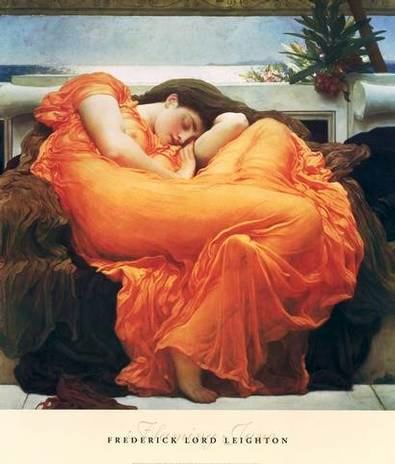
Posted in Consciousness, Dream science, Dreams, Lucid dreams, Neuropsychoanalysis, Neuropsychology, Parasomnia, תורת החלומות בעריכת רז אבן
Tagged brain, dream disorder
Comments Off on cessation of dreaming
Do Animals Dream?
🕊️🐶 I would like to recommend the article “Do Animals Dream?” by J.E. Malinowski, D. Scheel, and M. McCloskey, published in Consciousness and Cognition, Volume 95, October 2021. This fascinating study delves into the concept of animal dreaming, a topic that greatly interests me.
The article challenges conventional perspectives on consciousness by adopting an evolutionary approach. It meticulously examines the connection between sleep’s biological functions, the phenomenon of dreaming, and the unique challenges posed when studying dreams in non-human entities.
A key point highlighted in the study is the identification of dreaming in humans through verbal reports, underscoring the necessity for alternative methods in animal dream research. These methods encompass the analysis of dream behaviors, the investigation of neural adaptations linked to dreaming, and the exploration of memory replay during sleep. Dream behaviors observed in conditions such as REM sleep behavior disorder and narcolepsy offer valuable insights into dream content. The neural adaptations associated with dreaming involve specific brain regions and distinct brain activities. Moreover, the process of memory replay during sleep, evident in various human sleep stages, entails the reactivation and consolidation of new memories.
The article extends these concepts to animals, observing that many species display sleep states akin to human REM and slow-wave sleep. It emphasizes the potential of applying our understanding of neural correlations and memory retransmission from human dreams to animal species. This is particularly relevant in mammals, birds, and cephalopods like octopuses, which show sleep behaviors that may indicate dreaming. Intriguing examples include complex behaviors in cats and rats with specific brain lesions, as well as sleep behaviors in octopuses, suggesting the possibility of dreaming in these creatures.🕊️💎
Posted in תורת החלומות בעריכת רז אבן
Comments Off on Do Animals Dream?
חלומות צלולים
מטרת המחקר דלעיל היתה לבדוק מדדים נוירופיזיולוגים של חלומות צלולים.
מבחינה פנומנולוגית חלומות צלולים מהווים מצב תודעתי מעורב. מצד אחד מדובר בחלום, שהינו בעצם מצב האלוצינטורי תקין, אבל בעוד שבחלום רגיל אין החולם מודע לכך שמדובר בדמיון, הרי לחולם הצלול יש מודעות לכך שהוא חולם, ולעיתים אף יש לו יכולת שליטה מסויימת במתרחש.
ההנחה העקרונית של מחקר זה היתה שאם חלום צלול הינו מצב תודעתי מיוחד, הרי בהכרח יהיה לו גם מצע של מצב מוחי מיוחד.
לפי המימצאים עד היום – אין בהירות במחקר לגבי המצב הפיזיולוגי הנמצא בבסיס תופעה זאת, ולרוב מצאו שחלומות צלולים מתפתחים מתוך חלום רגיל בשנת ה REM עם מאפייני חלימה רגילים.
(לקריאה נוספת על חלומות צלולים
חלומות צלולים מופיעים באופן ספונטאני אך ניתן גם לתרגל כניסה אליהם, ולצורך המחקר השתמשו בסטודנטים שתרגלו זאת ואף תרגלו יכולת להודיע לנסיינים שהם במצב צלול ע”י תנועות עיניים מתואמות מראש.
למטרת המחקר גויסו 40 סטודנטים לפסיכולוגיה מאוניברסיטת בון בגרמניה, ואימנו אותם במשך 4 חודשים להיכנס למצב זה. בסוף האימון נבחרו 6 סטודנטים שהצליחו להיכנס למצב תודעתי צלול מעל 3 פעמים בשבוע. סטודנטים אלו נבדקו בסוף שבוע במעבדת שינה , ושלשה מהם מתוכם הצליחו לעורר ולקיים חלומות צלולים במעבדה בעת ימי המחקר .
כך שבסך הכל נערך המחקר על שלשה חלומות.
מסקנות המחקר היו שהחלומות אמנם ארעו , כצפוי, בשנת החלום הרגילה לקראת הבוקר, עם גלי דלתה וטתה רגילים, אבל נמצאה הגברה בגלים המהירים של 40 הרץ (גלי גאמה) , וזאת בעיקר באונות הפרונטאליות והפרונטולטארליות. גלים אלו מקושרים בד”כ לרמות תודעה גבוהות יותר. כמו כן נמצאה עליה בקוהרנטיות הכללית של גלי ה EEG על פני אזורי הקורטקס השונים, בעיקר הקדמיים – מה שמעיד על אינטגרציה טובה יותר של פונקציות קוגניטיביותצ ותפיסתיות.
כפי שכבר ידוע הרי בזמן חלימה ב REM יש ירידה בפעילות האונה הקדמית הצדדית , DLPC , ולכן יש ירידה בפונקציות האגו והביקורת בחלום. מחקר זה הצביע על הגברה בפעילות אזורים אלו בעת החלימה הצלולה, בדומה לערנות.
מימצא המחקר אכן מעיד על כך שחלומות צלולים מהווים מצב תודעה היברידי עם מאפיינים פיזיולוגים מיוחדים משלו
https://www.ncbi.nlm.nih.gov/pmc/articles/PMC2737577/
LUCID DREAMING
Lucid Dreaming: A State of Consciousness with Features of Both Waking and Non-Lucid Dreaming
Ursula Voss, PhD; Romain Holzmann, Dr; Inka Tuin, MD; J. Allan Hobson, MD
SLEEP 2009;32(9):1191-1200.
Posted in תורת החלומות בעריכת רז אבן
Comments Off on חלומות צלולים
חלומות והפרעות חרדה
למרות שהפרעות חרדה נחקרות היטב, מעט ידוע על תוכן החלומות של מטופלים הסובלים מהפרעות חרדה.
מטרת המחקר הנוכחי הייתה לחקור מאפיינים ספציפיים המתבטאים בחלומות של חולים עם הפרעות חרדה קליניות ולהשוות אותם עם חלומות של אנשים בריאים.
המדגם כלל 38 משתתפים עם הפרעות חרדה וקבוצת ביקורת בריאה תואמת של 38 אנשים.
מיד כשהתעוררו בבוקר, כל משתתף מילא יומני חלומות במשך 21 יום ובכך סיפק יומני חלומות כתובים.
דיווחי החלומות של המשתתפים נותחו על פי מערכת הול ו-ואן דה קאסל (1966) של אנליזת ניתוח תכנים השכיחים בחלומות.
תוצאות המחקר הראו שנוכחות הפרעת חרדה הביאה להבדלים משמעותיים בתכני החלומות, בהשוואה לחלומות של אנשים בריאים.
חלומות של חולי חרדה הכילו יותר דמויות, מספר גבוה יותר של פעילויות שונות, אינטראקציות חברתיות ואגרסיביות, מספר נמוך יותר של אינטראקציות ידידותיות, תדירות גבוהה יותר של כישלונות, חוסר מזל ורגשות שליליים, ושכיחות נמוכה יותר של הצלחות, מזל טוב ורגשות חיוביים.
בנוסף, היו להם מספרים גבוהים יותר של הופעות מיקומים מרחביים, היו להם הערכות עצמיות והערכות בכלל שהיו שליליות יותר, והן אופיינו במגוון אינטנסיבי ורחב יותר של גורמים משפיעים שונים.
התוצאות מצביעות אפוא על הבדל ברור בתוכן ובמבנה החלומות בחולי חרדה בהשוואה לאנשים בריאים, אם כי נושאי חרדה לא תמיד נפוצים בחלומותיהם.
Posted in R.E.M, חלומות בטיפול, חלומות בלהה, חלומות ברפואה, תורת החלומות בעריכת רז אבן
Comments Off on חלומות והפרעות חרדה
על סמל החיה בחלומות / רות נצר/ On the animal symbol in dreams
‘החיות החכמות המאכלסות את שנתך’: על סמל החיה והחיה בחלומות
רות נצר
“נוסעת בעלת לב צפור שחורה
שלך החיות החכמות המאכלסות את שנתך” (אלחנדרה פיזארניק)
המיתוס המרכזי של התרבות האנושית, ובעיקר של התרבות המערבית, הוא נצחון ואילוף החיה ואף הריגתה או הקרבתה. האל, המלך הקדמון והגבור – מתואר כמי שיכול לנצח את החיה הקדמונית ולשלוט בה. או כמי שמלווה על ידי חיה שהוא שולט בה והיא מסמלת את כוחו.
התודעה האנושית ביסודה מחייבת את ההמעטה, ההחלשה, ההגבלה ואף הגינוי של היסודות החייתיים-היצריים כי הם מסמלים את הכוח הלא-מודע המאיים להשתלט. התודעה נבנית על ידי חיזוק כוח השליטה של התודעה על פני היצרים בנפש. בתרבויות המערביות החיה כמסמלת את היצרים הגופניים נחשבת לנחותה. הבטים רבים של הגוף נחשבים טמאים; אברי ההפרשה, וכן הפרשות הגוף, ודם המחזור. ההבחנה ביהדות ובתרבויות קדומות אחרות, בין חיה טמאה וטהורה, היא אחת הדרכים להבחין בין היסוד המאיים לבין היסוד החיובי של החיה. טקסי טהרה שקשורים בגוף מסייעים לקבל את הגופני ולנטרל את איכותו השלילית.
חיות מסמלות במיתוסים, אגדות וחלומות את ההבטים האינסטינקטיביים-דחפיים-יצריים-גופניים-תחושתיים הבלתי מודעים שלנו ששייכים לממלכת הגוף. פרויד כינה אותם ‘איד’, ויונג כינה אותם ‘צל’, ואיתם באנו לעולם. הנטיה היאלהתייחס אל ‘האיד’ וה’צל’ כשליליים, אף כי בממלכת טבע הנפש דבר אינו טוב או רע מלכתחילה.
לחץ להורדת המאמר
On the animal symbol in dreams /
The central myth of human culture, and particularly of Western culture, is the victory over and taming of the beast, even killing or sacrificing it. The god, the ancient king, and the hero are depicted as those who can conquer the primal beast and dominate it, or as accompanied by a beast they control, symbolizing their power.
Human consciousness fundamentally requires the suppression, weakening, restriction, and even denunciation of the animalistic-instinctual elements because they symbolize the unconscious power threatening to take over. Consciousness is built by strengthening the control of consciousness over the instincts within the psyche. In Western cultures, the beast as a symbol of physical instincts is considered inferior. Many parts of the body are deemed impure; the organs of excretion, body secretions, and menstrual blood. The distinction in Judaism and other ancient cultures between an impure and pure animal is one way to differentiate between the threatening and the positive elements of the beast. Purification rituals related to the body help to accept the physical and neutralize its negative quality.
Animals symbolize in myths, legends, and dreams the unconscious instinctual-impulsive-physical-sensory aspects of ourselves that belong to the realm of the body. Freud called them ‘id’, and Jung called them ‘shadow’, with which we come into the world. The tendency is to regard the ‘id’ and ‘shadow’ as negative, although in the natural kingdom of the psyche, nothing is inherently good or bad.
Therefore, as compensation for this view, stories have emerged that restore value to the body’s beast: in healing tales, often the animal the person encounters is their guide. It shows them the way. One may need to learn to accept the beast with its repulsive parts to reveal its quality nature. Thus, in the story ‘The Frog Prince’, where the girl has to kiss the frog and then he is revealed to be a prince. And in the tale ‘Beauty and the Beast’, where what seems ugly and beastly is redeemed through love. This is the alchemical transformation of the beast’s inferior element into its noble aspect. In these instances, the beast symbolizes the person’s shadow aspect, which they learn to live with peacefully and discover its beneficial qualities.
Posted in carl jung dreams, Dream science, Dreams, Sleep, הסטוריה תורת החלום, חלומות בטיפול, חלומות ביוון, חלומות המטפלים, חלומות ואמנות, חלומות ומיתוסים, פסיכואנליזה, פסיכולוגיה אנאליטית, קשר טיפולי, שינה וחלומות, תורת החלומות בעריכת רז אבן
Tagged animals, Dreaming, jung dreams
Comments Off on על סמל החיה בחלומות / רות נצר/ On the animal symbol in dreams
שירים חלומיים / חלי טל שלם
חלי טל שלם
חמשה שירים העוסקים בחלומות
יַלְדִּי חוֹלֵק חֲלוֹם בַּפַּעַם הָרִאשׁוֹנָה
“כְּבָר אֵין טַוָּס בַּחוּץ?” שָׁאַלְתָּ
עֵינֶי התְּכֵלֶת שלך נִפְרָשׂוֹת על פני החַלּוֹן
כְּדֵי לְוַדֵּא
אֵיזֶה טַוָּס?
זְנַב הָרֶגַע חוֹמֵק מִיָּדִי
“לָבָן” עָנִיתָ,
לְחַיֶּיךָ סֻכָּר גָּדוּשׁ
**********
****************
Posted in תורת החלומות בעריכת רז אבן
Comments Off on שירים חלומיים / חלי טל שלם
המימדים האישיים והחברתיים של החלום / ד”ר גילה עופר
המימדים האישיים והחברתיים של החלום
ד”ר גילה עפר
הרצאה לפני האגודה לפסיכותרפיה פסיכואנליטית
קשה להמעיט בקסם של חלומות. עולם שלם וקסום. חלומות הם בין החוויות הכי פרטיות של האדם. לבד בלילה, עטוף בשנתו, החולם מעלה יצירות מופלאות ומורכבות מתוכו, שרובן נשכחות (95% מהחלומות נשכחים) וחלק קטן מהם נשאר בזכרוננו. את חלקם קשה אפילו לתאר במילים, קשה לתקשר אותם אפילו לעצמנו.קשה לתאר את הדימויים והתמונות השונות והמשונות. לעתים אנחנו נדהמים מיופים, לעתים נרתעים בפחד ובהלה, לעתים רוצים לשמור לעצמנו ולעתים משוועים לספר לאחר. החלומות משקפים את היכולת המופלאה של הנפש להגיע למחוזות יוצאי דופן של הדמיון.
להמשך קריאה
Posted in דמיון, הסטוריה תורת החלום, חלומות בטיפול, חלומות המטפלים, פורום חלומות, פירוש החלום, פסיכותרפיה, פרויד, פשר החלומות
Comments Off on המימדים האישיים והחברתיים של החלום / ד”ר גילה עופר
הלוגיקה של החלום / ד”ר אסנת הלוי בלבן
הלוגיקה של החלום
אסנת הלוי בלבן
מוסד ביאליק 2012
ספר זה עונה על השאלה: מהם הכללים הלוגיים של החלום? למרות מרכזיותו של החלום במשנתו של פרויד והספרות הענפה שפרחה בעקבותיה, לא נדונה שאלה זו באופן מספק. פרויד טען כי החלום הוא משמעותי, וכי כל עיקרו בהיותו צורה מיוחדת של חשיבה. אולם כל מחקרו לאחר קביעה זו מעיד על מגמה הפוכה: החלום כפי שהוא נחווה אינו מובן, אינו משמעותי. משמעותו טמונה ב”רעיונות החלום” הלטנטיים הלא מודעים, הנחשפים בפירוש. אם החלום כפי שהוא נחווה על ידי החולם הוא נטול משמעות עבורו בעודו שרוי בחלומו, בטרם פורש — הרי אינו חשיבה, אלא תוכן מוצפן בלבד, וכלליו — כללי הצפנה או כללי תרגום בלבד, ולא כללים של חשיבה משמעותית בפני עצמה.
הספר מבקש לממש את הבטחתו של פרויד לפיה החלום משמעותי, והכללים המעצבים אותו הם קטגוריות של חשיבה, אלטרנטיביות לאלה של החשיבה היומיומית בהקיץ. מוצע כאן מודל כללי של צורת החשיבה בחלום, המשרת את הדרישה הבסיסית מכל מחשבה: “שתגיד משהו על משהו”, שתהיה אינפורמטיבית.
נקודות המוצא של עבודה זו הן העובדה שהחלום מודע בעת החלימה, וההנחה שהחלום מובן לנו בעודנו שרויים בו. והרי החולם אינו מתפלא או מופתע מהקורות אותו בחלומו, אינו תוהה על זרויותיו, לפחות לא באותה מידה — ולגבי אותם ארועים — שבהקיץ היו גורמים לו הפתעה ופליאה אין-קץ. רק הרפלקסיה על החלום, המתחוללת בהקיץ, מציגה אותו כמוזר, בלתי סביר או חסר פשר. אם החלום מובן בזמן שהוא נחלם, הרי ששוררים בו סדר והגיון מבחינת החולם בעת החלימה. הגיון זה הוא נושא הספר.
החלום כפי שהוא נחווה בעת החלימה, החלום הגלוי, הוא לדברי פרויד פרי סילוף של רעיונות החלום החבויים בלחץ הצנזורה, המשרתת את ההתנגדות של ה”אני”. התהליך ההופך — או מתרגם — את רעיונות החלום לחלום הגלוי קרוי בפי פרויד “עבודת-החלום”. רעיונות החלום ערוכים על פי אופן החשיבה השורר בהקיץ. עבודת-החלום מערבלת את רעיונות החלום על פי מספר כללים, שהחשובים שבהם הם “עבודת המיזוג”, היינו מיזוג של דמויות ועניינים ו”עבודת ההתקה”, שהיא הסטת הדגש בחלום מן העיקר לטפל. מלבדם, משתתף ביצירת החלום גם המכאניזם של “היכולת להיות מתואר”, אשר עיקרו המחזה של רעיונות החלום הערוכים בלשון מושגית. לאלה מצטרפים מספר כללים נוספים, בהם כאלה הנוגעים לזמן ולסיבתיות בחלום.
Continue reading
Posted in Consciousness, Dream science, Dreams, תורת החלומות בעריכת רז אבן
Tagged Dreams, logic
Leave a comment
